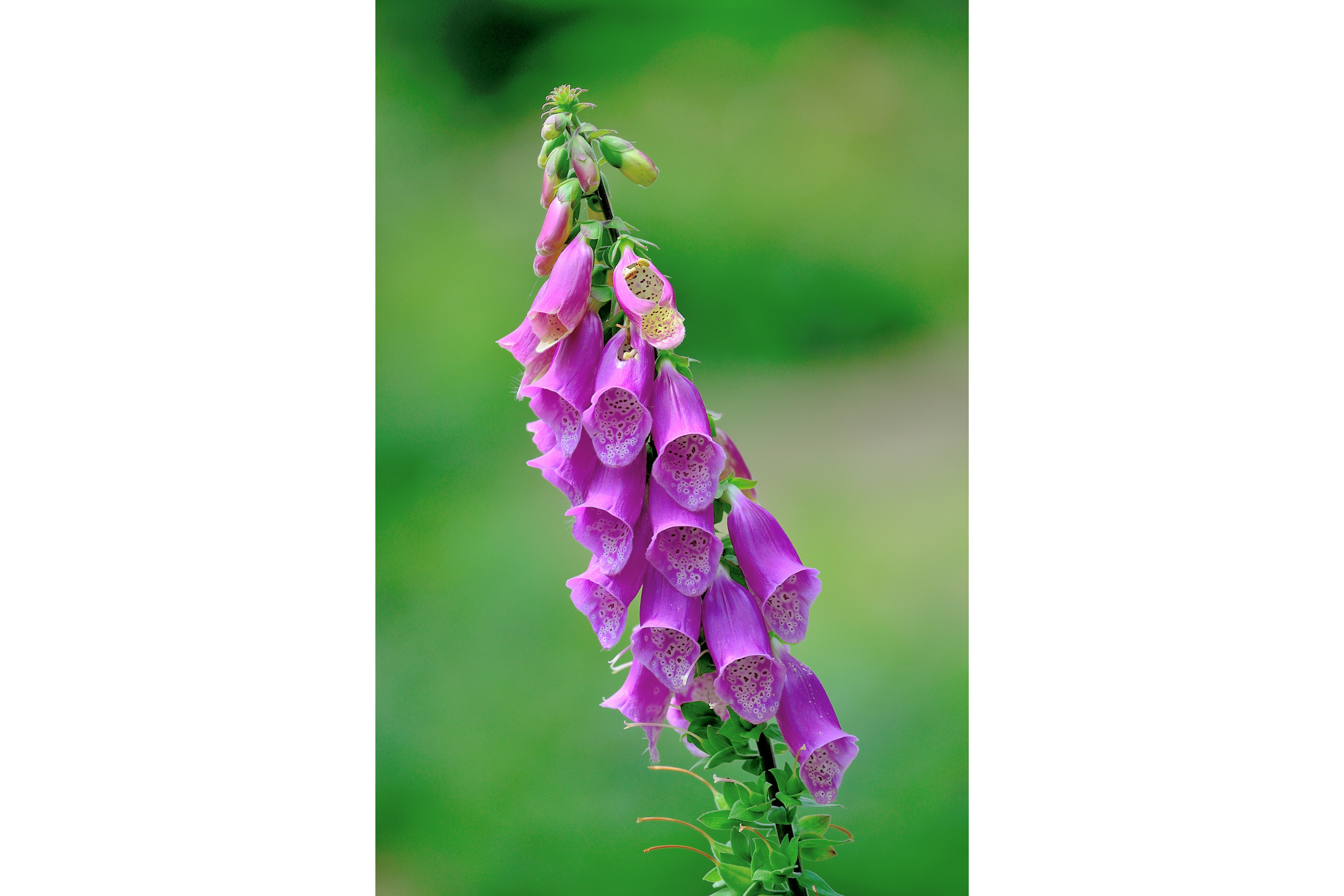Foxglove
(Digitalis purpurea)

Description
Digitalis purpurea, commonly known as foxglove, is a biennial plant that belongs to the family Plantaginaceae. This stunning plant is native to Europe but has been introduced to other parts of the world and has become naturalized in some regions. The foxglove plant has been cultivated for centuries for its medicinal properties, but it is also a popular ornamental plant due to its beautiful bell-shaped flowers. Description Digitalis purpurea is a tall plant that can grow up to six feet (1.8 meters) in height. The plant has a basal rosette of leaves that are ovate to lanceolate in shape, with a slightly hairy texture. The leaves can grow up to 12 inches (30 cm) long and 4 inches (10 cm) wide. The stem of the plant is tall and straight, with many small branches emerging from the main stem. The flowers of Digitalis purpurea are the plant's most distinguishing feature. The flowers grow in tall spikes that can reach up to 5 feet (1.5 meters) in height. Each spike can produce up to 2,000 individual flowers, which are arranged in a tight pattern around the stem. The flowers are bell-shaped, with a long, slender tube that opens into five pointed lobes. The flowers can be pink, purple, or white, and they have distinctive spots and markings inside the tube. Habitat and Distribution Digitalis purpurea is native to Europe, where it can be found growing in a variety of habitats, including woodland clearings, heathland, and open meadows. The plant has been introduced to other parts of the world, including North America, where it has become naturalized in some areas. Growing Digitalis Purpurea Digitalis purpurea is a popular ornamental plant that can be grown in a wide range of climates. The plant prefers well-drained soil that is rich in organic matter, but it can also tolerate slightly acidic or alkaline soils. Foxglove plants should be grown in areas that receive partial to full sun. Propagation Digitalis purpurea can be propagated by seeds or by dividing established plants. The seeds should be sown in early spring, either indoors or directly in the garden. The plants will germinate in two to three weeks and can be transplanted once they are large enough to handle. Established plants can be divided in the fall or early spring. To divide the plant, dig up the clump and separate it into smaller sections, each with its own roots and shoots. Replant the sections in well-prepared soil. Uses Medicinal Digitalis purpurea has been used in traditional medicine for centuries to treat various ailments, including heart failure, edema, and dropsy. The plant contains several compounds, including digitoxin and digoxin, which have cardiac glycoside properties. These compounds are used to treat heart conditions, as they can slow the heart rate and increase the strength of heart contractions. However, it is important to note that Digitalis purpurea can be toxic if consumed in large amounts. The plant should only be used under the supervision of a qualified healthcare professional. Ornamental Digitalis purpurea is a popular ornamental plant due to its striking flowers. The plant is often grown in cottage gardens, mixed borders, and wildflower meadows. The flowers are also popular with bees and other pollinators, making it a great addition to any garden. Conclusion Digitalis purpurea is a beautiful and versatile plant that can be grown for its ornamental value or for its medicinal properties. The plant's distinctive flowers and tall spikes make it a great addition to any garden
Taxonomic tree:







